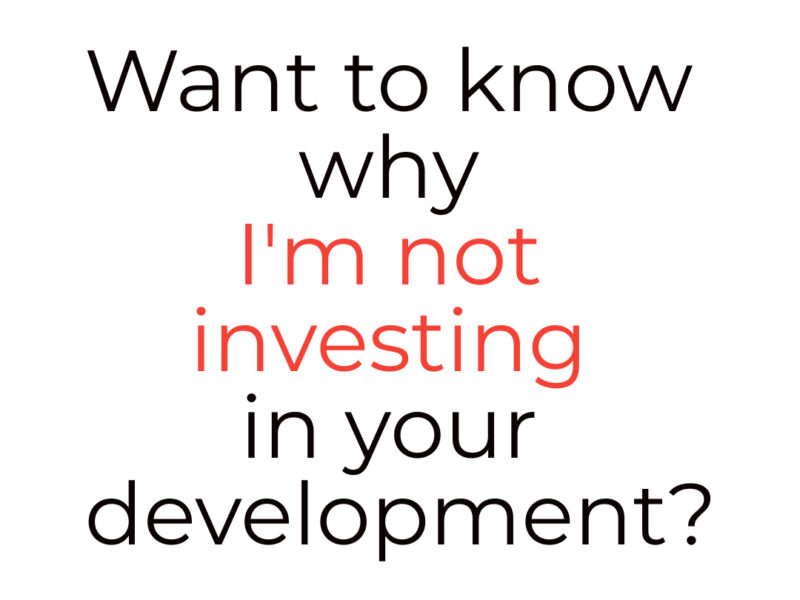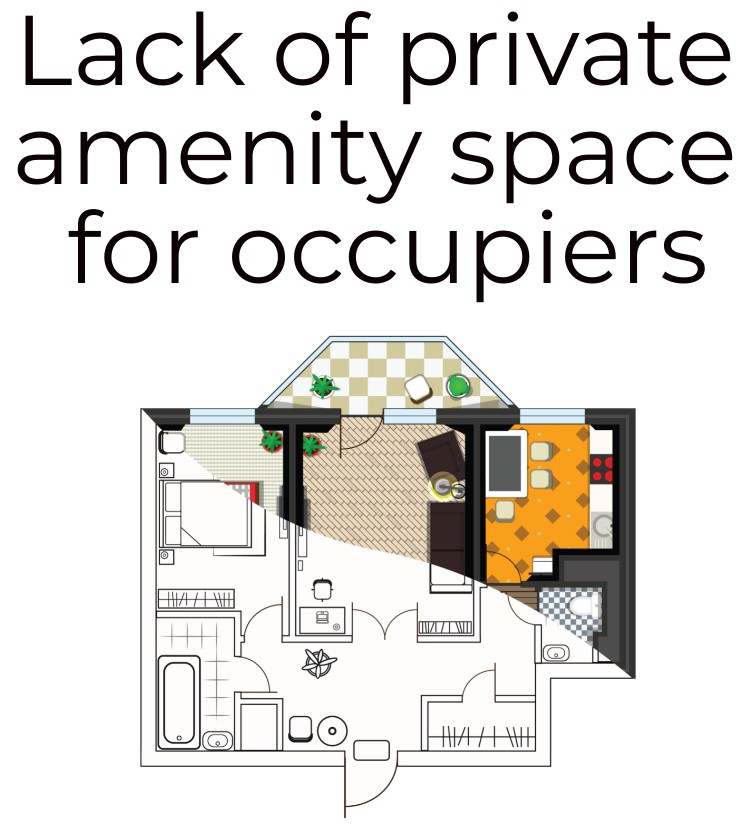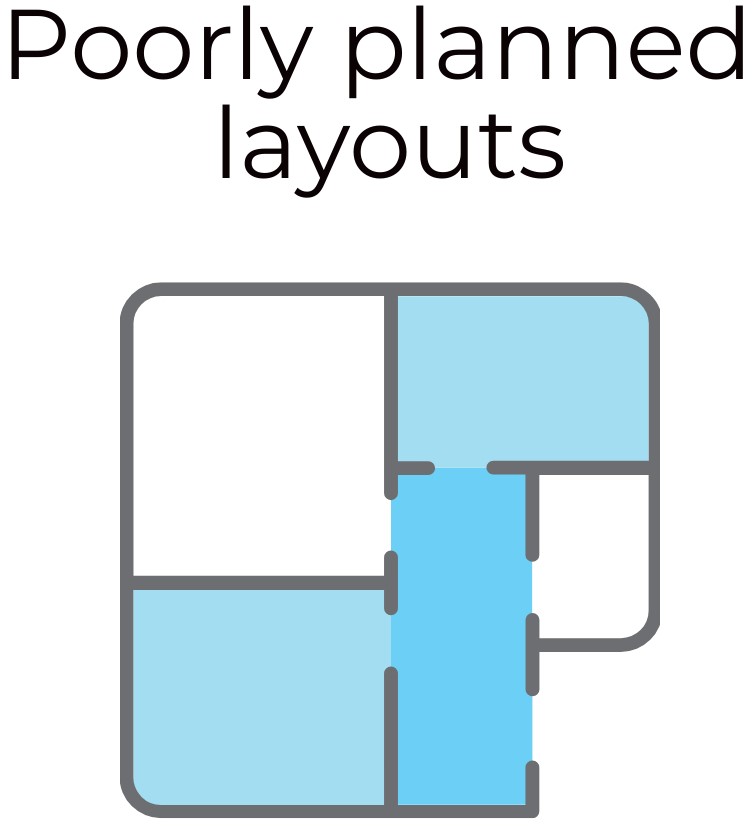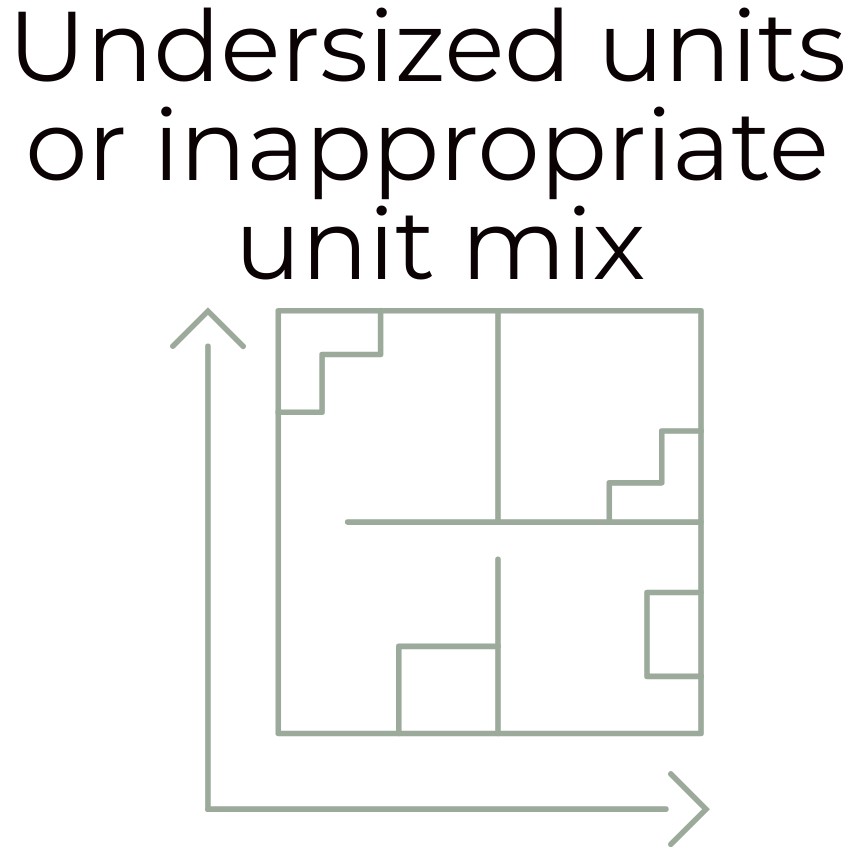
As an angel investor I get presented with a lot of investment opportunities. Even if the potential returns are attractive and I’m comfortable with the developer and their track record I still end up turning some of these deals down.
The scheme might stack up beautifully on paper, however I don’t want to be stuck in a deal for months or years because the developer can’t shift the final few units, or refinance at an attractive rate.
So in addition to the numbers and the track record I also want to be comfortable with the scheme’s marketability; in particular the location and the design.
In a bad market there’s a flight to quality.
Poorly designed and poorly located schemes suffer the most. Property development is a long process and there is no guarantee what market conditions you’ll be presented with at the point of sale / letting. So I want to maximise my chances of a successful exit.
So here are a few reasons I may decide to rule out an opportunity:-

Location – probably the biggest reason of the lot!
Kirstie & Phil don’t bang on about ‘location, location, location’ without good reason. Well-located properties will always find a buyer/tenant and are more likely to hold their value.
Poor aspect / busy roads / lack of local amenities etc
It’s important to stand back and ask yourself ‘Would I want to live here?’. Or at the very least, ‘Would someone else really want to live here?’. Is the intended market for the property going to be well-served with the kind of amenities that they’ll need. Obviously this will be different for a family house development compared to an HMO targeting young professionals or students.

Lack of private amenity space – especially since covid & often an issue with conversions
A property with outside space is likely to be snapped up faster than one without it. Even communal outside space can be better than nothing.

Poor design (badly thought-out layouts) / Tiny units
This goes back to the flight to quality point. In a hot market almost anything will sell. When market conditions are tougher then units with bad layouts or units which are very under-sized can hang around. For a developer/investor, the profit is in the last few units. It’s all very well selling 80% of your development, but if you can’t shift the final 20% your money is still tied up in the deal and your IRR plummets. Put in the hard work at the outset to make sure you’re designing the most liveable spaces you can. It’s worth paying someone to help you if you don’t have the experience yourself. Don’t assume your architect will have done it – that’s often not their focus. You need to be thinking about how someone will actually live in the space, right down to where the furniture can fit in the bedrooms.

Inappropriate bedroom mix for the location / insufficient choice
I once turned down an opportunity which was a new build scheme of executive homes in a tiny hamlet. I had several concerns about this scheme but one of which was the units themselves were all pretty much identical. Great for the developer when he’s ordering kitchens and bathrooms. Not so great when different buyers come along with different budgets and requirements. In addition, for such large homes the gardens were tiny. The developer had squeezed too many units onto the plot in my view. The final factor for me was that there were no amenities in the hamlet. I envisaged the poor parents having to spend hours every day in their cars driving their kids around and popping 5 miles down the road to buy milk. It seemed like an unsustainable location and I had fears I would be stuck in that scheme for years as the developer gradually managed to sell units.
So if an opportunity suffers from one or more of these issues I’ll probably pass and wait for the next opportunity to come along. Yes, it’s frustrating to have money sitting in the bank. But I’ll tell you what’s more frustrating…having cash tied up in a deal with your impatient angel investor hands equally tied behind your back!
Would any of these be enough to turn you off? Any others I’ve missed? Add your comments below…
Barry Rea
Canary Homes

Comments
Do you use similar metrics for commercial builds?
For me, I’d of thought transport links would be the key marker for commercial properties and whether you use that as metric for residential builds?
Hi Nick. Personally, I only invest in residential projects. Commercial would be a whole different ball game and the criteria you might look at would vary depending on the use class. Transport links might certainly be very important for some uses such as logistics and warehousing. Likewise, proximity of an office building to good road or rail links for the office users/their clients would be relevant. For high street retail it’s all about footfall. There’s a lot more to consider with commercial property because buildings can become obsolete with changing work patterns/government policy.
My name is Yossi, I have a building company im the directors, I looking for partnership to investment, let me know what is working for you.
Regards
Hi Yossi. Send me a DM on LinkedIn if you like. Barry